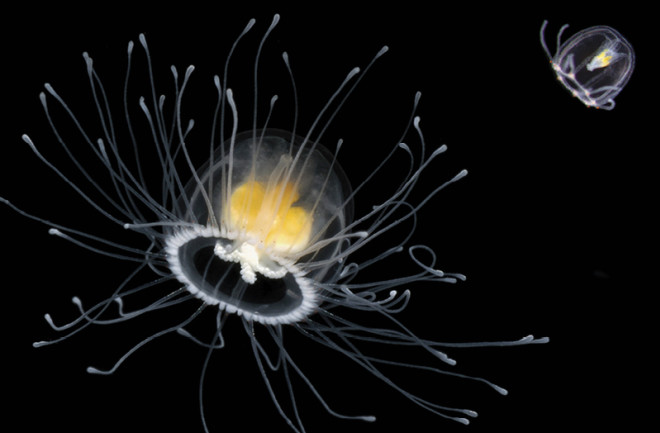Hiroshima’s downtown is a garden of modern architecture interspersed with swaths of lovely green parks. In the center is a single structure, in ruins, capped by a skeleton of curved iron. This is the Atomic Bomb Dome, located at the destruction’s epicenter, the sole building that managed to remain standing amid the massive force that flattened everything else for miles in all directions. It is an astonishing memorial to both our capacity for horrifying devastation and our awesome resilience. The dome sits along the side of one of six tidal streams that flow through Hiroshima.
In the murky, green water, thousands — maybe hundreds of thousands — of pale pink disks, a flood of jellyfish parade by as I observe. Juxtaposed with the dome, the endless stream of jellyfish seems to square off nature’s power against our own, a battle as old as civilization that continues to play out in the decisions we make today.
The milky creatures pulse slowly, slower than my heartbeat, which drops as I watch. The movements of their bells trailing gossamer tentacles are like millions of eyelashes blinking open and closed and open again, giving me a feeling that these alien animals could peer deep into the soul of the sea. I find it impossible to fathom the source of this endless river of life. The jellies continue to flow by for as long as I stand there.
Monster, Goddess
The technical name for the stage of a jellyfish’s life when it swims freely in the seas is medusa, a moniker shared with the ancient Greek mythological monster. Medusa is famous for her horrible face, which turned men to stone, and her wild locks of hissing snakes. It’s not hard to see similarities.

